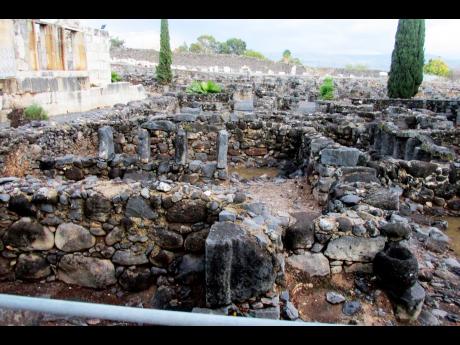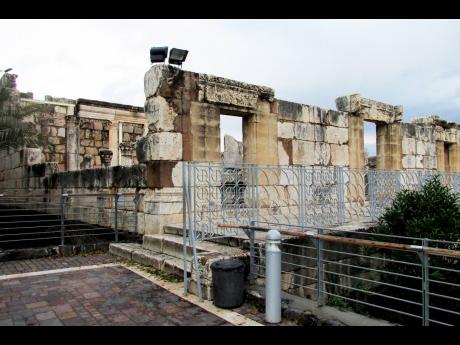Jesus’ December 25 birthday in doubt for years
December 25 is celebrated the world over for centuries as the birthday of Jesus Christ, who, it is said, was born in Bethlehem of Judea after his parents, Mary and Jesus, fled Nazareth to escape King Herod’s edict to kill all male children.
The order was made after he had heard of the coming of the Messiah.
Yet, despite the great significance attached to December 25 in Christendom, there have always been doubts about the authenticity of this date, and according to Christian.com, many Orthodox Christians celebrate Christmas on January 7.
“Neither date is likely correct, in light of several clues uncovered by historians and information in the Bible itself,” Christian.com says.
This article briefly looks at some of the theories put forward to explain why December 25 may or may not be Jesus’ birthday. The sources are mainly Christian.com, Bibleinfo.com, and History.com.
There are volumes of printed and electronic documents about this most controversial subject. However, there is a common thread of four main theories/explanations, viz, the shepherds mentioned in the Gospel of Luke, the death of King Herod, the birth of John the Baptist, and ‘Roman paganism’.
According to Christian.com contributing writer Candice Lucey, “One hypothesis suggests that Jesus may have been born in the month of December. This idea is largely based on the mention of shepherds in the Gospel of Luke who were tending their flocks at night when the angelic announcement of Jesus’ birth occurred.”
Some argue that this activity would have been more likely in a warmer month, implying that Jesus may have been born in a mild Mediterranean climate during the winter. As the cold winter months began, the flocks would return from the fields for protection and warmth. Since the shepherds were still tending their flocks in the fields around Bethlehem, it can be deduced that the angels announced the news of Jesus’ birth no later than October, Lucey says.
Bibleinfo.com says that in order to determine the approximate month of Jesus’ birth, we can look at the story of the birth of John the Baptist. Elizabeth, the wife of Zacharias, could not bear children, but became pregnant with John the Baptist after Zacharias’ temple service. Gabriel visited Mary when Elizabeth was six months pregnant and announced that she would give birth to Jesus. By counting from the date of Zacharias’ priestly service to the birth of Jesus, we can find additional clues to answer the question of when Jesus was really born.
“Therefore … we can approximate the month of Jesus’ birth to be around the time of Tishri (mid to late September). To arrive at this date, start at the conception of John the Baptist, Sivan (June), count forward six months to arrive at Gabriel’s announcement of the conception of Jesus, Kislev (December), then count forward nine more months, the time it takes for human gestation, to reach Tishri (September), when Jesus was born,” Bibleinfo.com says.
According to History.com, early Christians (and so too many Christians today), regard Easter, which commemorates the death and resurrection of Jesus Christ, as the most important holiday on the Christian calendar. However, as Christianity began to take hold in the Roman world, in the early fourth century, church leaders had to contend with a popular Roman pagan holiday commemorating the “birthday of the unconquered sun” ( natalis solis invicti), the Roman name for the winter solstice.The following are also some Roman-related theories.
THEORIES
In rationalising the celebration of Jesus’ birthday in late December, church leaders may have argued that since the world was allegedly created on the spring equinox (late March), so too would Jesus have been conceived by God on that date. The Virgin Mary, pregnant with the Son of God, would hence have given birth to Jesus nine months later on the winter solstice.
In the late Roman Empire, there was a festival called ‘Sol Invictus’ (the Unconquered Sun) that celebrated the sun god on December 25. Some have suggested that the choice of this date for Christmas was influenced by the desire to Christianise or replace this pagan holiday, conceived as an effort to establish a pagan substitute for a date that already held a degree of importance for Roman Christians.
Saturnalia was a Roman festival that celebrated the god Saturn and included various festivities, including gift exchanges and feasting. Some argue that the early Christians chose December 25 to celebrate Jesus’ birth to co-opt or replace Saturnalia with a Christian holiday.
When Roman Emperor Constantine converted to Christianity, it was easier for the newly formed church to repurpose the pagan observance of the winter solstice between December 17-25, since citizens were already prepared to celebrate the day. Thus, a celebration and festival filled with family and friends exchanging gifts meant these traditions would continue as Christmas.
Another intriguing theory proposes that December 25 was officially designated as Christmas Day by Sextus Julius Africanus in AD 221. This assertion is rooted in meticulous calculations that Africanus undertook, embarking on a historical journey that began with his estimation of the world’s creation in 5499 BC … Africanus’ determination to find this date led him to December 25, marking it as the momentous day when Christians should celebrate the birth of their Saviour.
There is also the King Herod factor. Christian.com says that dating the birth of Jesus around the death of King Herod involves a combination of biblical and extra-biblical sources, along with some scholarly interpretations. “ The primary source for dating Jesus’ birth in relation to King Herod comes from the New Testament, specifically the G ospel of Matthew. In Matthew 2:1, it mentions that Jesus was born during the time of King Herod. It also describes Herod’s attempt to have Jesus killed by ordering the massacre of infants in Bethlehem, commonly known as the ‘Massacre of the Innocents’,” Lucey writes.
December 25 as Jesus’ birth is mired in conjectures, and, as such, should it still be a day to celebrate such, and does it matter when he was born?
Lucey says, “Even if the global Christian community could clearly decide that Christ was born on a different day, changing the date of Christmas worldwide would pose many problems. Selecting a new date for celebrating Christ’s birth would require massive adjustments at both commercial and institutional levels … . It is beneficial to fix a date for Christmas Day, even if it seems arbitrary.” For now, that arbitrary day is December 25.




